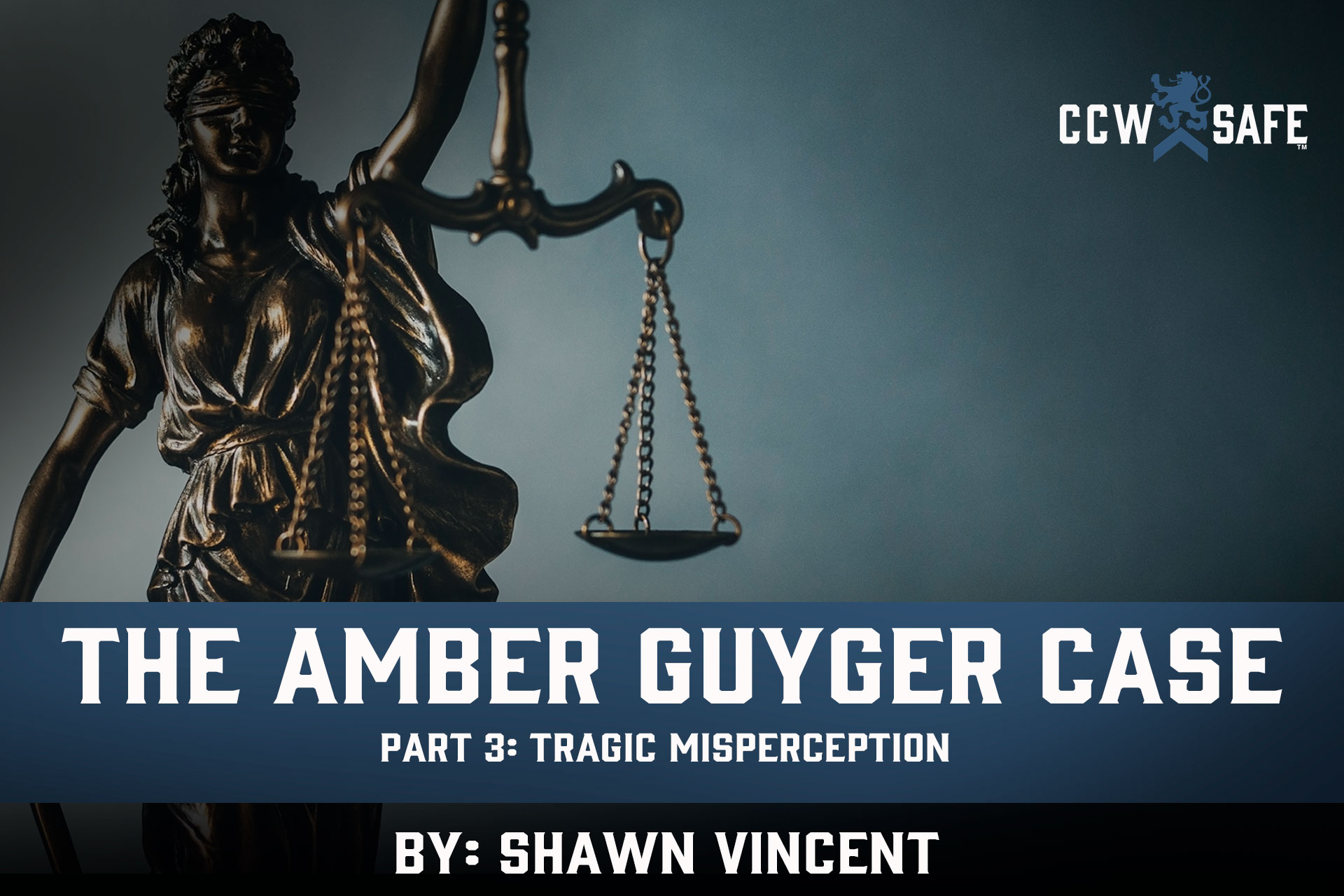
Posted on February 14, 2020
The Amber Guyger Case Part 3: Tragic Misperception
The Amber Guyger Case
Part 3: Tragic Misperception
After Amber Guyger shot 26-year-old Botham Jean, she made a frantic 911 call. The recording lasts five minutes and thirty eight seconds. “I’m an off-duty officer,” she says. “I thought I was in my apartment, and I shot a guy thinking that he was . . . thinking it was my apartment.”
When asked for the address, she says, “I’m at apartment number 1478.” The listener can imagine, and testimony will confirm, that Guyger went to the door to read the number. She repeats it with more certainty: “I’m in 1478.” She’s just coming to terms with the tragic reality.
“Hey, bud, come on,” she says to Jean who was still alive but incapacitated and quickly dying. “I thought it was my apartment. I could have sworn I parked on the third floor.”
She had not. Distracted and tired after a 14-hour shift as an officer for the Dallas Police Department, she parked one floor up, and she didn’t discover her mistake until she had entered her upstairs neighbor’s darkened apartment (the door was unlocked), discovered a “dark silhouette,” and fired upon what she thought was an intruder. It wasn’t until she could make out Jean’s round ottoman in the dark room that she started to realize her tragic misperception.
We’ve written about some of Guyger’s critical errors in judgment, and some bewildering self-centered remarks she made in the immediate aftermath of the shooting — but despite all of those shortcomings, had Guyger been correct in her assumption that she was in her own apartment, there’s a decent chance she would have been found justified in meeting an unknown, unwelcome home intruder with deadly force.
If you accept that Guyger truly believed she was in her home, as it seems the jury did, then it should serve as a sobering reality check for any concealed carrier. One critical misperception in a self-defense scenario can have deadly results and potentially severe legal consequences for the errant defender.
Depending on where you live, perhaps it’s inconceivable to imagine you’d ever mistake a neighbor’s home for your own. Perhaps it’s easier to imagine mistaking your neighbor for an intruder.
In Hawaii, not long ago, John Hasselbrink went out drinking, and hailed an Uber to take him home around 4 am. The Uber driver stopped a door or two away from the townhome where the inebriated Navy sailor actually lived. Confused, Hasselbrink ended up at the front door of Gregory Farr. Unable to enter, he became angry and started banging loudly. Farr, awoken by the clatter, concerned that someone was trying to break into his home, grabbed his rifle and called out to the intruder. When he got no response, and when the violent banging continued, he fired through the front door. Later he discovered the man he killed was his neighbor. As of October, 2019, Farr was awaiting trial on manslaughter charges.
If you can imagine mistaking your neighbor for an intruder, perhaps you can imagine mistaking a member of your household.
Alexis Bukrym was on edge after a series of break-ins at her Ocala, Florida apartment complex. One night, when she was home alone, she was startled by a loud crashing sound near the front door of her apartment. Moments later, she watched with terror as the door knob in her bedroom turned and her door slowly opened. Bukrym, who learned to shoot at the age of 10 kept a .38 under her pillow. She aimed it at the figure who emerged in her doorway and fired, striking her roommate, Anthony Schwartz, in the abdomen. She wasn’t home alone after all. Usually he knocked before entering her room. Schwartz survived but with life-altering injuries.
Each of these defenders, including Guyger, made errors in judgement, but without the underlying misperception, none of these tragedies would have occurred. Looking back at the cases we’ve explored, so many involve a critical misperception that led to tragedy. Ted Wafer mistook the intentions of Renisha McBride when she was frantically banging on his door at 4 am. Gerald Strebendt though David Crofut was reaching in his pocket for a gun. Markus Kaarma thought the teen trespassing in his garage was the burglar who invaded home weeks before. Michael Drejka thought Markis McGlockton was advancing toward him even though surveillance video shows him stepping backwards.
The lesson for concealed carriers is that in many stressful self-defense scenarios, the defender can be (and often is) wrong about some of the critical details. If Amber Guyger could have credibly mistook someone else’s home for her own, then it’s not inconceivable that other less obvious details can be confused in a potential life threatening scenario. That’s why we stress de-escalation. Anything you can do to buy yourself more time to assess your situation can help you avoid a deadly confrontation, or help ensure you are truly justified if you must use deadly force.
 |
SHAWN VINCENT- LITIGATION CONSULTANTShawn Vincent is a litigation consultant who helps select juries in self-defense cases, and he manages public interest of high-profile legal matters. If you have any questions for Shawn, or would like more articles like this, let us know belo |